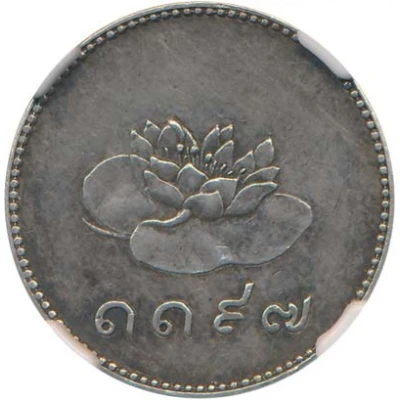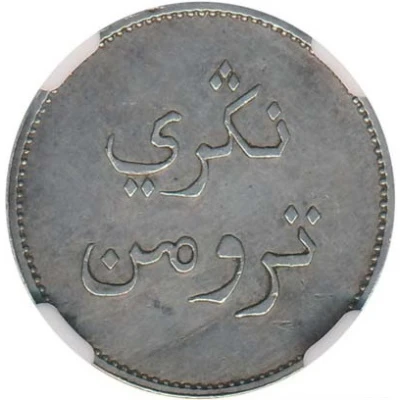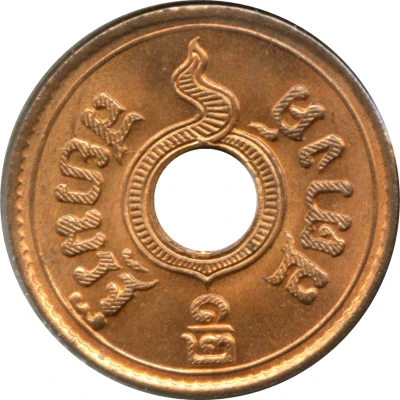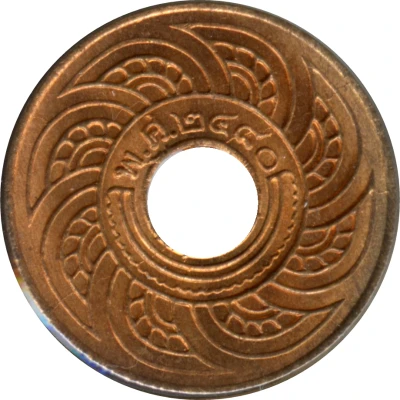


Lotus-Malay inscription - Rama III
1197 (1836) year| Silver | 5.0 g | 22 mm |
| Issuer | Thailand |
|---|---|
| King | Phra Nang Klao (Rama III / Nangklao) (1824-1851) |
| Type | Pattern |
| Year | 1197 (1836) |
| Calendar | Thailand - Rama era |
| Currency | Baht / Tical (1869-1897) |
| Composition | Silver |
| Weight | 5.0 g |
| Diameter | 22 mm |
| Shape | Round |
| Orientation | Coin alignment ↑↓ |
| Demonetized | Yes |
| Updated | 2024-10-08 |
| Numista | N#174242 |
|---|---|
| Rarity index | 100% |
Reverse
Inscription in Malay language
Script: Arabic
Lettering:
نڭري
ترومن
Unabridged legend:
Nagari
Trumon
Translation: Land of Trumon
Comment
This coin is a mule, with the observe inscription using Thai numeral, but with reverse inscription in Arabic Malay script referring to Trumon, a region located near Aceh, Sumatra.
These coins were not official currency of any state. They were first issued in the early 1800s by British merchants at Singapore, to alleviate base coin shortage, before spreading to various parts of the Malay Archipelago. To circumvent confiscation attempts by colonial authorities (particularly the Dutch), British merchants use inscriptions that refer to locations that are vague, fictitious, or unaffiliated to Europeans. In this manner, legally it could not be argued that the tokens were intended for circulation in colonial territories.
See Singh, The encyclopaedia of the coins of Malaysia, Singapore, and Brunei, 1400-1986 (1986:445-449) for details.
Interesting fact
One interesting fact about the Pattern Lotus-Malay inscription - Rama III 1197 (1836) from Thailand made of Silver weighing 5.0 g is that it features a unique blend of Thai and Islamic design elements. The coin's obverse side features a depiction of a lotus flower, which is a symbol of purity and enlightenment in Buddhism, while the reverse side features Arabic script and a crescent moon, which are hallmarks of Islamic culture. This blending of design elements reflects the diverse cultural influences that have shaped Thailand's history and identity.

